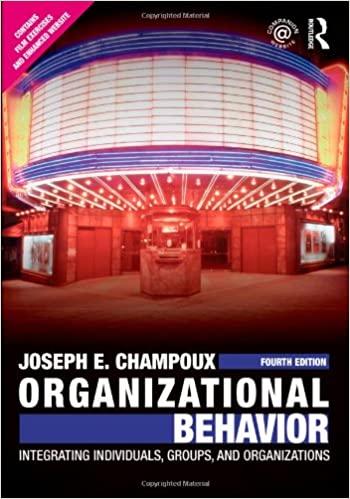Answered step by step
Verified Expert Solution
Question
1 Approved Answer
Can you answer these questions for me? 1. Which statement is true concerning unrealized profits in intra-entity inventory transfers when an investor uses the equity
Can you answer these questions for me? 1. Which statement is true concerning unrealized profits in intra-entity inventory transfers when an investor uses the equity method? The investee must defer upstream ending inventory profits. The investee must defer upstream beginning inventory profits. The investor must defer downstream ending inventory profits. The investor must defer downstream beginning inventory profits. The investor must defer upstream beginning inventory profits. 2. Dodge, Incorporated acquires 15% of Gates Corporation on January 1, 2011, for $105,000 when the book value of Gates was $600,000. During 2011 Gates reported net income of $150,000 and paid dividends of $50,000. On January 1, 2012, Dodge purchased an additional 25% of Gates for $200,000. Any excess cost over book value is attributable to goodwill with an indefinite life. The fair-value method was used during 2011 but Dodge has deemed it necessary to change to the equity method after the second purchase. During 2012 Gates reported net income of $200,000 and reported dividends of $75,000. The income reported by Dodge for 2012 with regard to the Gates investment is $80,000. $30,000. $50,000. $15,000. $75,000. 3. Dodge, Incorporated acquires 15% of Gates Corporation on January 1, 2011, for $105,000 when the book value of Gates was $600,000. During 2011 Gates reported net income of $150,000 and paid dividends of $50,000. On January 1, 2012, Dodge purchased an additional 25% of Gates for $200,000. Any excess cost over book value is attributable to goodwill with an indefinite life. The fair-value method was used during 2011 but Dodge has deemed it necessary to change to the equity method after the second purchase. During 2012 Gates reported net income of $200,000 and reported dividends of $75,000. Which adjustment would be made to change from the fair-value method to the equity method? A debit to additional paid-in capital for $15,000. A credit to additional paid-in capital for $15,000. A debit to retained earnings for $15,000. A credit to retained earnings for $15,000. A credit to a gain on investment. 4. On January 3, 2011, Roberts Company purchased 30% of the 100,000 shares of common stock of Thomas Corporation, paying $1,500,000. There was no goodwill or other cost allocation associated with the investment. Roberts has significant influence over Thomas. During 2011, Thomas reported income of $300,000 and paid dividends of $100,000. On January 4, 2012, Roberts sold 15,000 shares for $800,000. What was the balance in the investment account before the shares were sold? $1,560,000. $1,600,000. $1,700,000. $1,800,000. $1,860,000
Step by Step Solution
There are 3 Steps involved in it
Step: 1

Get Instant Access with AI-Powered Solutions
See step-by-step solutions with expert insights and AI powered tools for academic success
Step: 2

Step: 3

Ace Your Homework with AI
Get the answers you need in no time with our AI-driven, step-by-step assistance
Get Started


